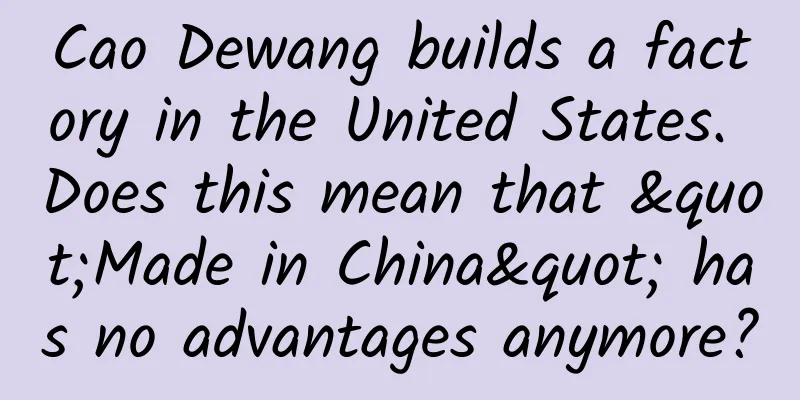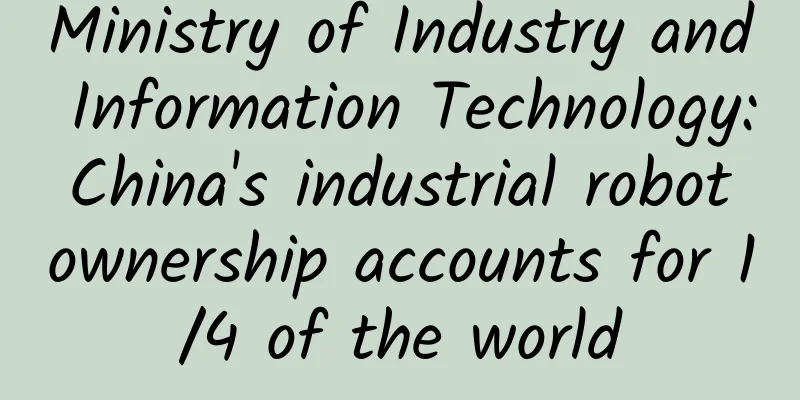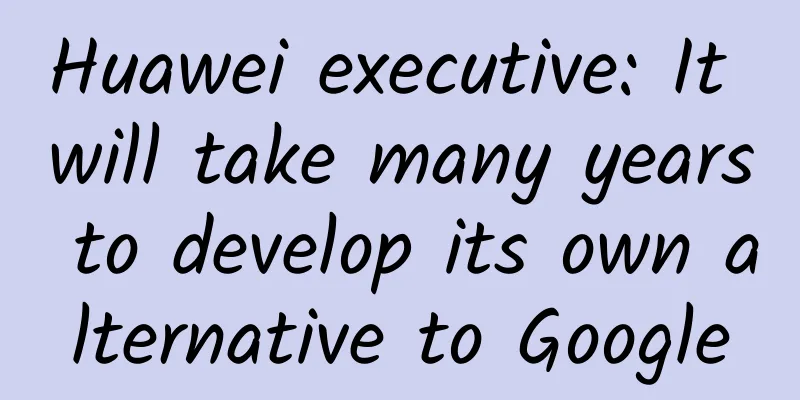Cao Dewang builds a factory in the United States. Does this mean that "Made in China" has no advantages anymore?

|
Cao Dewang, one of the representatives of Chinese private enterprises and chairman of Fuyao Glass, invested US$600 million to build an automotive glass factory in the United States and officially put it into production. In a recent media interview, he said that he plans to invest US$1 billion to build a factory in the United States. He believes that the main reason for building a factory in the United States is the high domestic production costs. In today's China, on the one hand, the economy is in a downturn, competition is becoming increasingly fierce, and the market's requirements for improving product quality, quality, and brand are constantly increasing, forcing manufacturing companies to transform and upgrade. But on the other hand, companies are facing heavy burdens in terms of costs and taxes. What do you think of Cao Dewang's move? Does Cao Dewang's building of a factory in the United States mean that the cost of manufacturing in China is higher than that in the United States? How heavy is the tax burden on enterprises? What other options are there for Chinese manufacturing companies? Question 1: In the battle of costs, who has higher costs? Boston Consulting Group analyzed four important aspects of the world's top 25 leading export economies and found that several economies that have been considered low-cost manufacturing bases in the past have faced pressure to significantly reduce their cost advantages since 2004 due to a combination of factors. For example, it is estimated that China's factory manufacturing cost advantage over the United States has weakened. Among the world's top 10 commodity exporters, except for China and South Korea, the manufacturing costs of other economies are higher than those of the United States. Boston Consulting Group believes that soaring labor and energy costs have weakened China's competitiveness. So what about the tax burden on enterprises? Against the backdrop of the country's vigorous efforts to reduce costs for enterprises, a Xinhua News Agency reporter recently interviewed an authoritative department and learned that because different taxes are calculated on different bases and tax rates are set differently, the tax burden on enterprises cannot be measured simply by looking at the tax rate. Instead, a comprehensive and objective assessment should be made from multiple dimensions, including the company's own operating conditions and tax and fee exemptions. The level of a country's tax burden can be measured by observing the country's macro-tax burden. The OECD calculates the tax burden of each country based on the proportion of tax revenue and social security contributions to GDP. In 2014, the average level of OECD countries was 35.3%, while my country's average level was only 23.5%, 11.8 percentage points lower. In the past two years, my country has been vigorously promoting tax cuts and burden reduction. Experts believe that the tax reduction efforts have been increasing in recent years, and there is still room for tax reduction in the future. The Central Economic Work Conference also proposed that next year, we should accelerate the promotion of basic and key reforms such as state-owned enterprises, finance, taxation, finance, and social security, and better play the leading role of economic system reform. Question 2: Why do companies feel burdened? Whether looking at the numbers or the actual situation, rising costs are an indisputable fact and there is no doubt about that. In fact, the cost burden is not just a problem in China, but a common problem affecting the global manufacturing industry. But why is the “feeling” of “Made in China” so obvious? This is closely related to the development stage and industrial structure of "Made in China". First, the biggest comparative advantage of "Made in China", which started with processing and assembly, was its cost advantage in the early stages of development. After decades of rapid growth, the cost advantage has been declining in terms of resources, manpower, energy, and other aspects. At a stage where the manufacturing industry has not changed significantly, "Made in China", which mainly relies on low costs to make profits, is naturally very sensitive to changes in costs. Secondly, although rising costs seem to be a long process, the impact it brings to enterprises is a process of quantitative change to qualitative change. The reporter interviewed experts from the Ministry of Industry and Information Technology and the manufacturing industry. They believed that, especially in the process of "Made in China" solving the scale problem and moving towards the middle and high end, on the one hand, the industry gradient shifted, and the cost advantage gradually decreased compared with Southeast Asian countries. On the other hand, the products have not yet reached a high added value and cannot absorb the overflow costs. This "interim" stage has led to the stimulation of various problems. Secondly, this is the inevitable way to transform the industrial structure. Yes, costs are rising! And they are rising at a speed that seems incomprehensible to us! But we must also be confident that "Made in China" will not always enjoy the dividends of costs. Transferring out the scale manufacturing part that relies on costs and introducing high value-added links driven by innovation is a path we must take. Among the world's major manufacturing countries, almost no country has included all links of the industry. "Picking up high value-added" is the direction of supply-side reform and the only choice for "Made in China". Question 3: How do we address cost issues? Seeing this, you may ask, if you say that high costs are inevitable, then are we willing to just sit back and watch them rise? Of course not, and we must take care of it! First, the stock must be stabilized. Although the low-cost advantage of low-end manufacturing, which is mainly based on processing and assembly, is being lost, scale is still an important foundation for "Made in China" to move towards the middle and high end. We pursue innovation-driven and high added value, and we must also stabilize these stocks. We must continue to reduce the burden on enterprises and provide policy support. The Central Economic Work Conference proposed that the general tone of work of seeking progress while maintaining stability is an important principle of governance and a methodology for doing a good job in economic work. It also sends an important signal of vigorously revitalizing the real economy and boosting industrial development. Experts believe that in the process of advancing towards a manufacturing power, the key is to grasp the relationship between stability and progress. Stability is the main theme and the overall situation. However, stability does not mean inaction. On the premise of stability, we must make progress in key areas and transform cost advantages into innovation-driven on the basis of stability. This means that the overall policy environment of reducing the burden on enterprises and supporting their innovation-driven development will not change. Especially with regard to cost reduction, the Central Economic Work Conference proposed that "we must increase our efforts to reduce taxes, fees, and factor costs; we must reduce all types of transaction costs, especially institutional transaction costs, reduce approval procedures, reduce all types of intermediary assessment fees, reduce corporate energy costs, reduce logistics costs, increase labor market flexibility, and encourage companies to look inward to reduce costs and increase efficiency." Second, encourage innovation-driven development. The best way to resolve the cost burden is to increase product added value and enhance brand voice. The problem of "Made in China" needs to be "managed", and the core is to create an environment that encourages innovation. Encouraging innovation has been the policy direction in recent years. Administrative approval projects continued to decrease, investment approval items were greatly reduced, and management and regulatory model innovations such as "Internet + government services" continued to emerge; commercial system reform was further deepened, and on the basis of the full implementation of "three certificates in one", the implementation of "five certificates in one" and "one license and one code" was launched; the reform of the investment and financing system continued to advance, and the investment approval method continued to improve... Since the beginning of this year, a series of reform measures in this regard have been deeply promoted, and entrepreneurial vitality has been released. In the first 10 months, the number of newly registered enterprises nationwide increased by 28.9% year-on-year, with an average of 14,600 new enterprises being born every day, forming a climax since the reform of the commercial system. Build multiple industry alliances, aiming to conquer common key technologies in the industry; establish national innovation centers to promote the transformation of more scientific research results into productivity; improve the fault tolerance mechanism for new technologies, implement incentives for the transformation of results, and remove institutional barriers to talent mobility... In addition to stimulating the vitality of market entities, a series of measures have also been introduced to seek maximum synergy, activate innovation factors, gather scientific research funds, and "circulate" R&D results, striving to create a good environment in which the whole society respects and desires innovation. Question 4: What are the options for “Made in China”? The answer is probably: increase product added value and transform the mode of industrial development. The core of these two is to accumulate the momentum of "Made in China" and is also the intention of promoting supply-side structural reform. The changes that "Made in China" is experiencing are, on the surface, changes in costs, but in reality, they are deep adjustments in structure. It is urgent to accelerate the cultivation of new momentum, transform and enhance traditional comparative advantages, and strengthen supply-side structural reforms. We must maintain strategic focus and seek competitive advantages beyond cost. First, increase product added value. Make products better and strengthen technology. Use innovation to open up and lead the market and realize the transformation of old and new kinetic energy. Whether it is new technology, new model or new business format, the core is to rely on innovation to leverage new demand, form new momentum and create a new engine for kinetic energy transformation. At present, the integration of new-generation information technology, new energy vehicles, the Internet and manufacturing, and innovation are in full swing, and their development potential and influence are immeasurable. Innovation is not limited to new fields and new industries, but more importantly, innovation in existing industries. In addition to accelerating the development of emerging industries, traditional industries are also "sprouting new buds on old trees" through measures such as the Industrial Internet. Secondly, we should transform the mode of industrial development and promote the adjustment of industrial structure. We should rely on the optimal combination of production factors, improve the quality and efficiency of production factors, make industrial development more healthy, intensive and sustainable through technological progress, improving the quality of workers, and improving the utilization rate of funds, equipment and raw materials. Of course, we cannot avoid it and must continue to promote cost reduction. We must increase our efforts in reducing taxes, fees, and factor costs, reduce various transaction costs, especially institutional transaction costs, reduce approval links, reduce various intermediary assessment fees, reduce corporate energy costs, reduce logistics costs, and increase labor market flexibility. Maybe it’s a little early to say this now. But maybe one day, when the “Made in China” brand becomes popular and the core competitiveness is enhanced, we used to do processing and supporting for others, but in return, they will “work for us”. At that time, we may not have to worry too much about the cost issue, but pay more attention to the cutting-edge strategy and future direction. As a winner of Toutiao's Qingyun Plan and Baijiahao's Bai+ Plan, the 2019 Baidu Digital Author of the Year, the Baijiahao's Most Popular Author in the Technology Field, the 2019 Sogou Technology and Culture Author, and the 2021 Baijiahao Quarterly Influential Creator, he has won many awards, including the 2013 Sohu Best Industry Media Person, the 2015 China New Media Entrepreneurship Competition Beijing Third Place, the 2015 Guangmang Experience Award, the 2015 China New Media Entrepreneurship Competition Finals Third Place, and the 2018 Baidu Dynamic Annual Powerful Celebrity. |
<<: Japanese automakers face shortage of technology talent and salary levels
>>: Tesla's new car order users will not be able to use the Supercharger for free
Recommend
The reason why potato chips are so delicious is closely related to their growth
It’s the autumn outing season again, and if we ta...
The display effect of 4.7-inch iPhone 6 is like this
What will the iPhone 6 UI look like after it becom...
What is that thing tied to the bird's leg?
Bird migration has always been an important topic...
How much does it cost to customize women’s clothing in Quzhou through the mini program?
The main factors affecting the price of mini prog...
To users who have difficulty hailing a taxi: Stop cursing. You are actually paying for the new policy.
"The online ride-hailing service has crashed...
The “original brand” is refined and the “new brand” takes off, this is the “black soil” you can’t imagine!
How important is the Northeast? Everyone is a com...
These ten IT jobs are the easiest. Where do you rank?
When people mention IT professions, the first thi...
There is a huge fire pit that has been burning for nearly 50 years. It is difficult to extinguish it.
Nature always brings us incredible surprises. In ...
Fang Hao’s selected skills class for the 2021 postgraduate entrance examination in mathematics will help you solve problems much faster than others! Less likely to go wrong!
Fang Hao’s selected skills class for the 2021 pos...
Can a Baidu promotion port account add a framework account as a sub-account?
Framework users need to sign a contract between t...
What else can you do on the Spring Equinox besides "standing an egg"? Let's do the Eratosthenes experiment to estimate the circumference of the Earth!
Open any modern introductory science book or sear...
The beautiful sunset can actually be predicted. When do you think it will appear again?
On May 14, the news that "a beautiful sunset...
A seasonal delicacy that you cannot miss, a spring in one bite
Review expert: Li Guangwang, Director of the Natu...
Microsoft shows off its weird Silent Voice technology
Microsoft is working on a new voice input interfa...
Those "little tricks" hidden in variety shows and reality shows
Since Hunan Satellite TV successfully introduced ...









